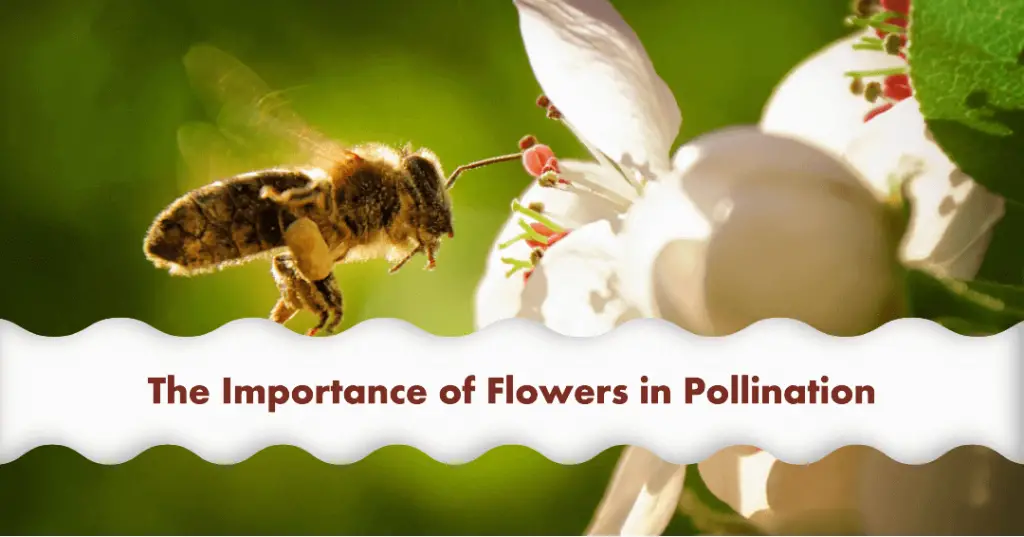As we admire the beauty of flowers, it is easy to overlook their significance to bees. Bees play a crucial role in the pollination of plants, and their ability to see flowers is an important aspect of this process. But how do bees see flowers? Let’s dive deeper into this fascinating topic.
Bees Flowers Seeing System’s
Bees have a different visual system than humans, which allows them to see a wider range of colors and patterns. They have three types of photoreceptors in their eyes that are sensitive to ultraviolet, blue, and green light. This allows them to see colors that are invisible to humans, such as ultraviolet patterns on flowers that guide them towards the nectar.
Bees can also see polarized light, which helps them navigate using the sun’s position. They use this ability to find their way back to the hive and to locate flowers. Some flowers have a unique property called polarization patterns that reflect light in a specific way. Bees use these patterns to find flowers, even on cloudy days when the sun’s position is not visible.
How Much Bees eyes are Faster than Human’s?
Bees also have a unique way of seeing motion. Their eyes are capable of processing visual information up to 300 times faster than humans, which allows them to detect even the slightest movement. This ability helps them avoid predators and find flowers that are moving in the wind.
Related Articles:
- Bees and Flowers Symbiotic relationship.
- How to Make Sugar Water for Bees: A Complete Guide
- Do Bees Drink Water: Importance of Water for Bees
The Role of Flowers in the Pollination Process
Flowers play a crucial role in the pollination process by attracting bees with their color, shape, and scent. The bright colors of flowers are not just for show, but are a way to signal to bees that they have nectar and pollen to offer. The shape of flowers also plays a role in attracting bees, as some flowers have specific shapes that are tailored to the anatomy of certain bee species.

The scent of flowers is also important, as it helps bees locate them from a distance. Some flowers produce scents that are similar to the pheromones that bees use to communicate with each other. This helps bees recognize which flowers they have already visited and which ones still have nectar and pollen available.
The Importance of Bees in Pollination
Bees are essential to the pollination process, which allows plants to reproduce and provide food for other animals. Without bees, many plant species would die out, leading to a ripple effect throughout the ecosystem. Bees are responsible for pollinating crops that provide food for humans, such as fruits, vegetables, and nuts. They also pollinate plants that provide habitat and food for other animals, such as birds and insects.
FAQ’S
How bees see the world?
Bees have compound eyes, which consist of numerous individual lenses called ommatidia. Each ommatidium captures a small portion of the visual field, and the information is combined to create a mosaic-like image for the bee. Bees see the world as a combination of different visual patterns, colors, and polarized light.
Why can bees see ultraviolet light?
Bees can see ultraviolet (UV) light because they have specialized photoreceptor cells in their compound eyes that are sensitive to UV wavelengths. This ability helps bees navigate, locate flowers, and detect patterns on flowers that are invisible to humans and many other animals.
How far can bees see?
Bees have good vision for objects within a close range. They can typically see details and recognize objects up to a few meters away. However, their vision is most effective within shorter distances, particularly when it comes to identifying flowers and landmarks for navigation.
How do bees see in the hive?
Bees navigate inside the hive primarily through their sense of touch and smell rather than relying on their vision. The interior of the hive is dark, and bees rely on their other senses to communicate, recognize each other, and locate specific areas such as the brood cells, food stores, and the entrance/exit.
Can bees see glass?
Bees can see glass, but they perceive it differently than humans do. Glass appears transparent to bees, and they can navigate around it as they do with other obstacles. However, glass can sometimes cause problems for bees if they mistake reflections or transparent surfaces for an opening, leading to collisions or confusion.
Do bees have eyelids?
No, bees do not have eyelids. Their compound eyes are exposed and do not have any protective covering. However, bees have a set of short hairs on their legs called “curtain hairs” that they can use to clean and groom their eyes, removing any dust or foreign particles that may accumulate.
Conclusion
Bees are a vital part of our ecosystem and play a crucial role in pollination. Without bees, many plant species would die out, and the food web would be disrupted. It’s essential that we take steps to protect and support bee populations, such as planting bee-friendly plants and avoiding the use of harmful pesticides.




